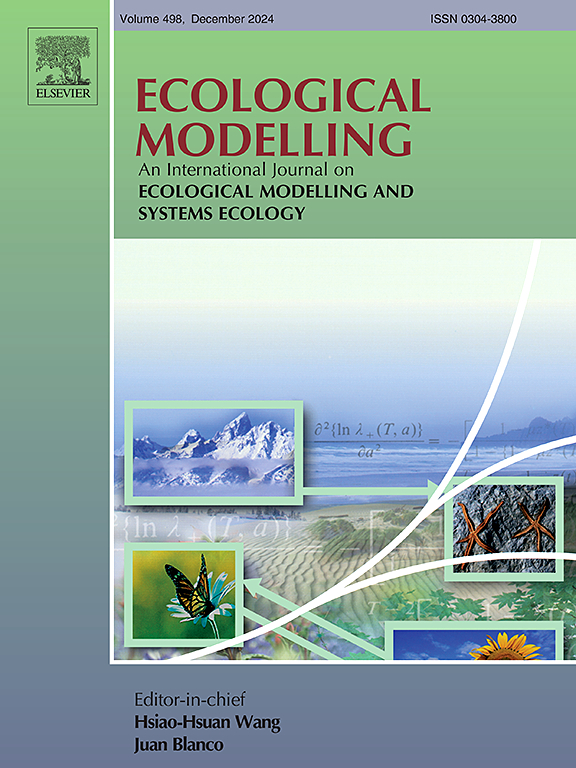Estimating stomatal conductance under drought: Parameterizing a phenomenological model and evaluating roles of the energy balance equation
IF 2.6
3区 环境科学与生态学
Q2 ECOLOGY
引用次数: 0
Abstract
Accurate estimation of stomatal conductance (gs) is fundamental for modeling coupled photosynthesis-transpiration responses to climate change, yet current approaches face limitations under drought conditions. To predict gs under drought, the widely-used Ball-Woodrow-Berry (BWB) model relies on empirical soil moisture functions (fw) with uncertain validity. As a physically-based alternative, inverted Penman-Monteith (PM) equation derived from leaf energy balance principles offers a mechanistic solution. To evaluate the implicit assumption that BWB model parameters (excluding fw) remain not altered by drought and the predictive capability of the PM-based energy balance approach, a two-year field experiment in the nationally-planted oil crops—soybean (Glycine max L.) and oilseed rape (Brassica napus L.) was conducted. Our results revealed that crop-specific responses in BWB parameter variations during water stress, with significant predictive errors occurring if responses of gs to vapor pressure deficit were not considered. While the PM-based energy balance approach performed well for gs of oilseed rape, it required modification for soybean to account for greater leaf temperature fluctuations (ΔTleaf) under water-deficit relative to well-watered conditions caused by more variable water deficits. Our study demonstrated that integrating an inversed PM equation for gs with the CO2-diffusion law and a biochemical photosynthesis model accounting for ΔTleaf is an effective approach to predict both photosynthetic rate and gs under water stress without introducing empirical functions.
求助全文
约1分钟内获得全文
求助全文
来源期刊

Ecological Modelling
环境科学-生态学
CiteScore
5.60
自引率
6.50%
发文量
259
审稿时长
69 days
期刊介绍:
The journal is concerned with the use of mathematical models and systems analysis for the description of ecological processes and for the sustainable management of resources. Human activity and well-being are dependent on and integrated with the functioning of ecosystems and the services they provide. We aim to understand these basic ecosystem functions using mathematical and conceptual modelling, systems analysis, thermodynamics, computer simulations, and ecological theory. This leads to a preference for process-based models embedded in theory with explicit causative agents as opposed to strictly statistical or correlative descriptions. These modelling methods can be applied to a wide spectrum of issues ranging from basic ecology to human ecology to socio-ecological systems. The journal welcomes research articles, short communications, review articles, letters to the editor, book reviews, and other communications. The journal also supports the activities of the [International Society of Ecological Modelling (ISEM)](http://www.isemna.org/).
 求助内容:
求助内容: 应助结果提醒方式:
应助结果提醒方式:


